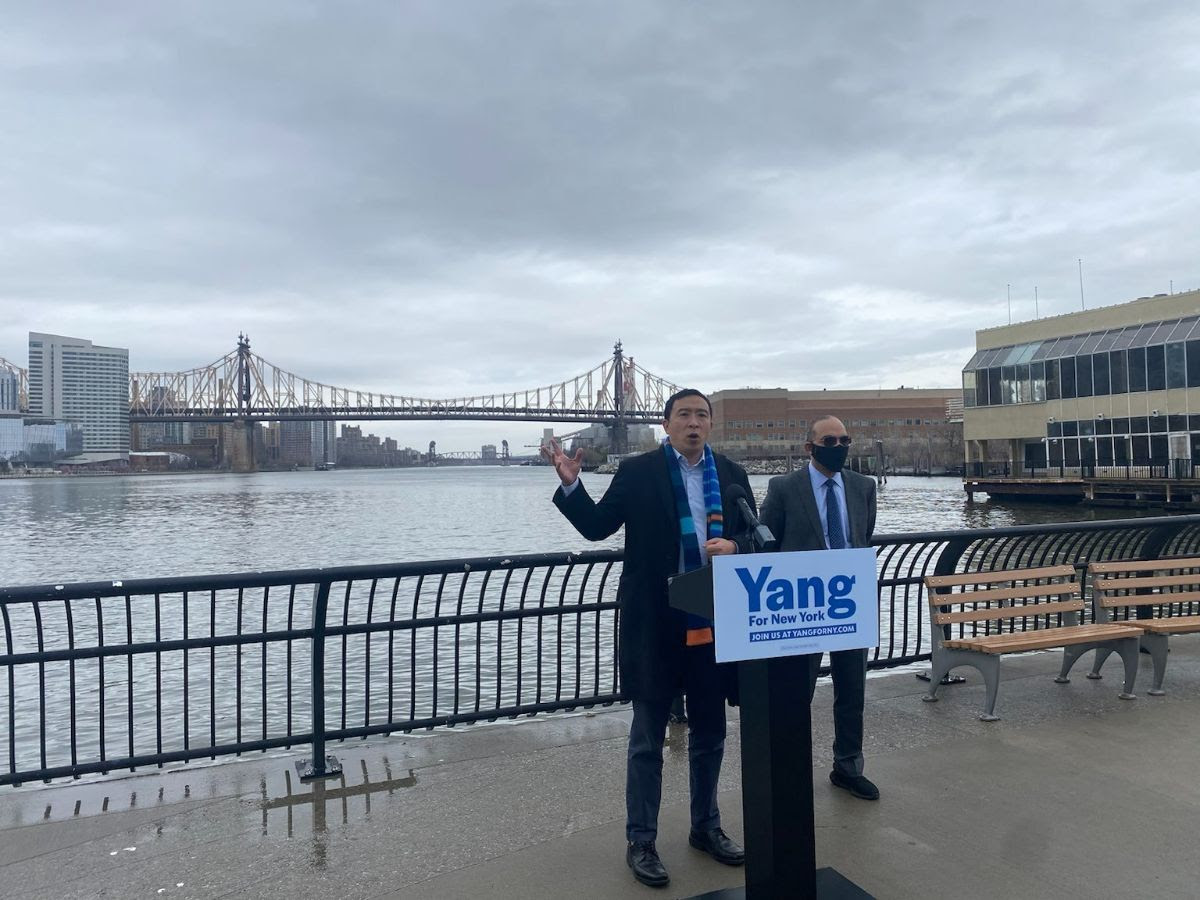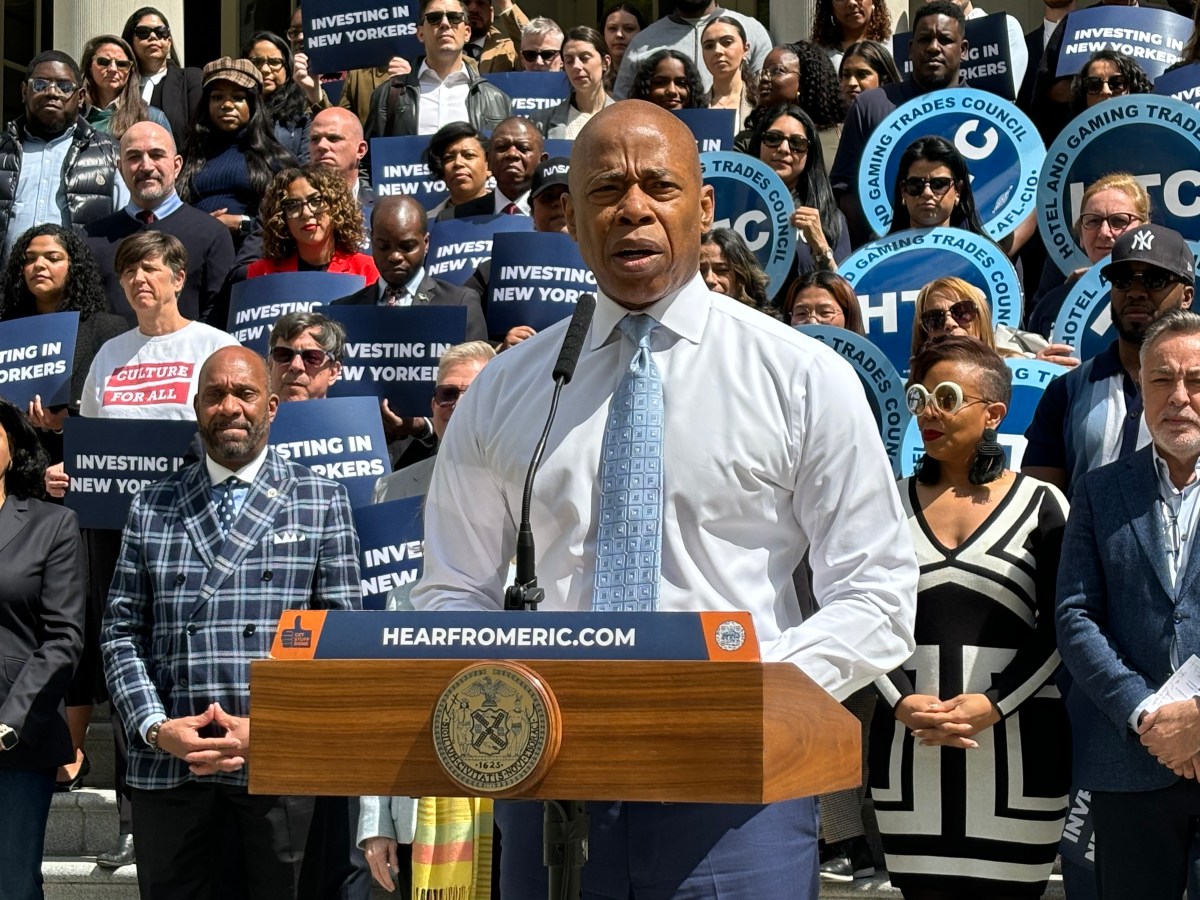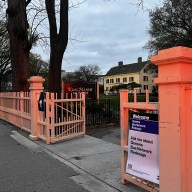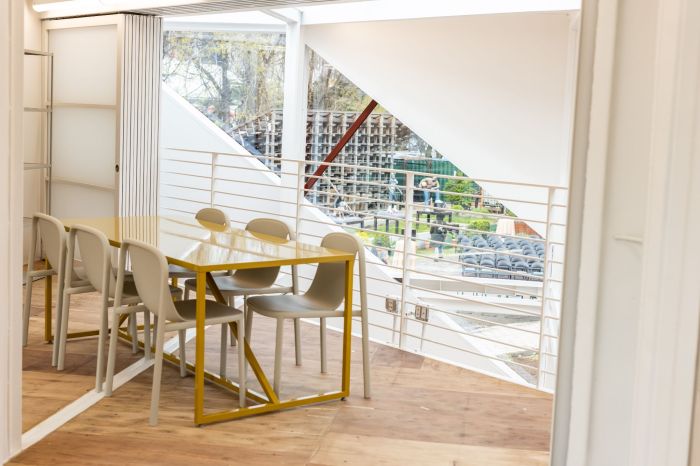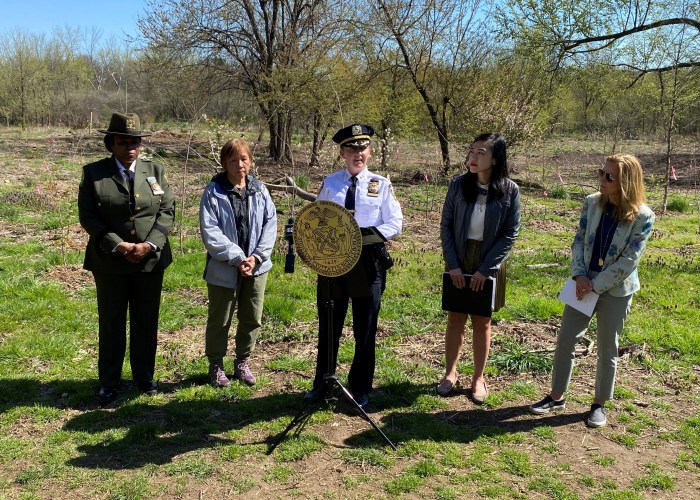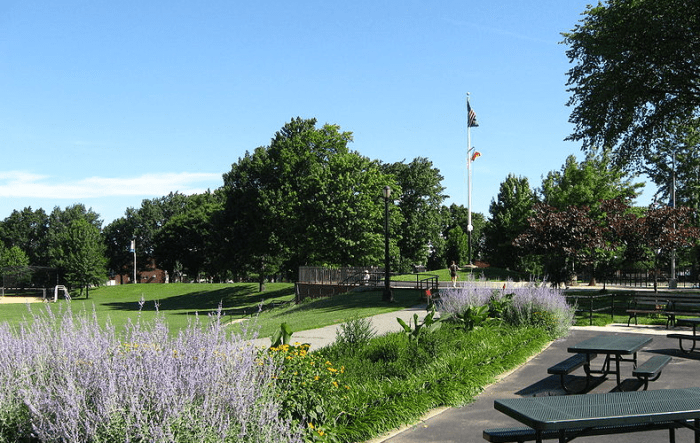Mayoral frontrunner Andrew Yang made a campaign stop along the East River in Long Island City calling for the development and construction of the proposed River Green Power (RGP) plant this week.
Yang was joined by Bishop Mitchell Taylor, the senior pastor of Center of Hope International and co-founder of Urban Upbound, to highlight how the project could be a model for district energy plants to provide green heating and cooling services for neighboring buildings.
The plant would drastically reduce reliance of fossil fuels while helping buildings exceed the requirements of the recently enacted Local Law 97. Developer Bruce Teitelbaum has plans to build the green energy hub on his property just north of Anable Basin known locally as “Lake Vernon.” In addition to construction of a geothermal heating and cooling plant, the RGP proposal calls for bringing in private capital to upgrade the heating and cooling systems at the Queensbridge Houses NYCHA development nearby.
“Our city lost 700,000 jobs during the pandemic and the truth is that right now our recovery is behind much of the rest of the country,” Yang said. “As mayor, I’m going to be laser-focused on creating jobs and getting New Yorkers back to work. Beyond the extraordinary challenge we have ahead of us to rebuild our city’s economy, we also have to think about how we can create jobs that also fight the threat of climate change. And I believe we can do both right here in communities like Long Island City.”
The six-acre site is next to the parcels of land that were part of Amazon’s HQ2 campus proposal and were later part of the ill-fated YourLIC development plan.
“The proposed River Green Power plant is exactly the kind of innovative, job-creating green infrastructure projects we should by backing not just to get our city back on its feet, but back on its feet and sprinting towards the future,” Yang said. “This project alone will create 1,000 of those jobs and a sustainable source of energy for years to come.”
The RGP proposal was endorsed by Queensbridge Houses Tenants Association President April Simpson,
“This plant will do right by our tenants by providing reliable and sustainable energy to the Queensbridge Houses at no cost to the residents,” Simpson said. “The plan would be a godsend to the 75 percent of families in our development who currently do not have reliable air conditioning. I am grateful that Andrew Yang has made greening NYCHA facilities core to his mayoral campaign. We all deserve to play a role in the green energy revolution.”
Currently, Queensbridge residents must rely on decades-old steam heating systems and window air conditioning units. The RGP plant would use a combination of an intake-outake system with the East River and approximately 500 geothermal bores each drilled down to 850 feet to provide sustainable heat and cooling services for neighboring buildings using a closed system of water circulation integrated with the ventilation systems of individual buildings.In addition, the RGP plan calls for job training and scholarships for Queensbridge residents, who had been hoping for many of the 25,000 jobs Amazon promised to create as part of its HQ2 plan.
“Projects such as the River Green Power plant in Long Island City are vital not only to moving the city forward to a greener and more sustainable future, but also in creating real equity opportunities as well as jobs that were promised to Long Island City residents,” Taylor said. “We need to modernize our NYCHA housing stock, which has been stuck in a Byzantine time warp where our most vulnerable communities have to rely on ancient technology to keep cool or stay warm, and I want to thank Andrew Yang for his vision in pushing such innovative ideas to the forefront. This proposal is not only environmentally sound for New York City, but it will also rejuvenate job opportunities for the neighborhood.”
The $250 million privately financed project is estimated to create more than 1,000 jobs as part of the construction, design and engineering, plus ongoing maintenance and service jobs when completed.

